Alessio Fascista
Uplink Joint Positioning and Synchronization in Cell-Free Deployments with Radio Stripes
Feb 07, 2023



Abstract:Radio stripes (RSs) is an emerging technology in beyond 5G and 6G wireless networks to support the deployment of cell-free architectures. In this paper, we investigate the potential use of RSs to enable joint positioning and synchronization in the uplink channel at sub-6 GHz bands. The considered scenario consists of a single-antenna user equipment (UE) that communicates with a network of multiple-antenna RSs distributed over a wide area. The UE is assumed to be unsynchronized to the RSs network, while individual RSs are time- and phase-synchronized. We formulate the problem of joint estimation of position, clock offset, and phase offset of the UE and derive the corresponding maximum-likelihood (ML) estimator, both with and without exploiting carrier phase information. To gain fundamental insights into the achievable performance, we also conduct a Fisher information analysis and inspect the theoretical lower bounds numerically. Simulation results demonstrate that promising positioning and synchronization performance can be obtained in cell-free architectures supported by RSs, revealing at the same time the benefits of carrier phase exploitation through phase-synchronized RSs.
ESPRIT-Oriented Precoder Design for mmWave Channel Estimation
Jan 04, 2023



Abstract:We consider the problem of ESPRIT-oriented precoder design for beamspace angle-of-departure (AoD) estimation in downlink mmWave multiple-input single-output communications. Standard precoders (i.e., directional/sum beams) yield poor performance in AoD estimation, while Cramer-Rao bound-optimized precoders undermine the so-called shift invariance property (SIP) of ESPRIT. To tackle this issue, the problem of designing ESPRIT-oriented precoders is formulated to jointly optimize over the precoding matrix and the SIP-restoring matrix of ESPRIT. We develop an alternating optimization approach that updates these two matrices under unit-modulus constraints for analog beamforming architectures. Simulation results demonstrate the validity of the proposed approach while providing valuable insights on the beampatterns of the ESPRIT-oriented precoders.
RIS-Aided Radar Sensing and Object Detection with Single and Double Bounce Multipath
Dec 14, 2022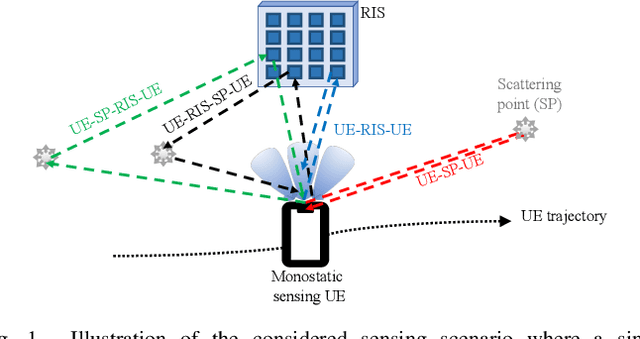
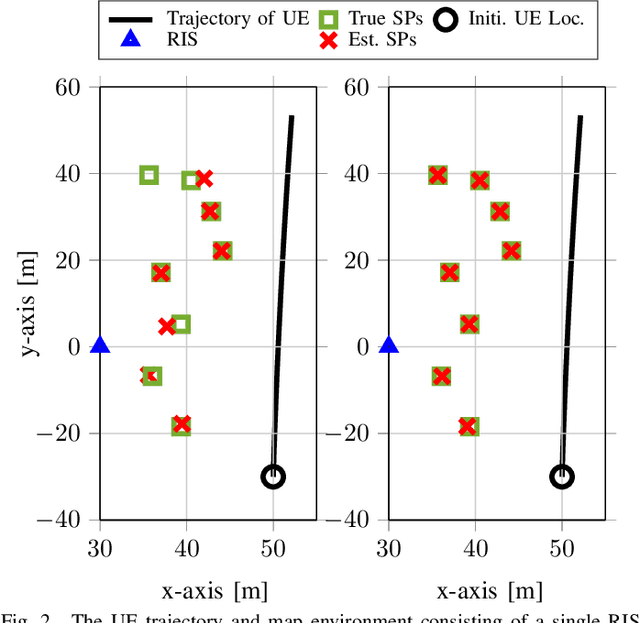
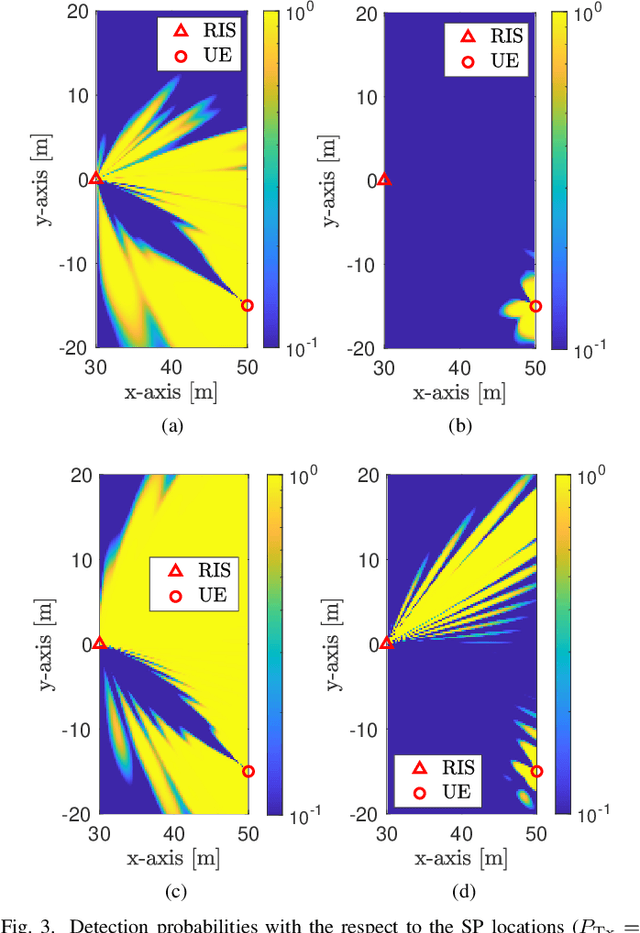
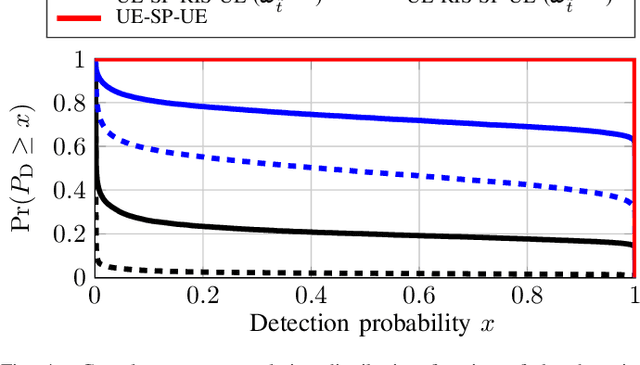
Abstract:We propose a framework for monostatic sensing by a user equipment (UE), aided by a reconfigurable intelligent surface (RIS) in environments with single- and double-bounce signal propagation. We design appropriate UE-side precoding and combining, to facilitate signal separation. We derive the adaptive detection probabilities of the resolvable signals, based on the geometric channel parameters of the links. Then, we estimate the passive objects using both the double-bounce signals via passive RIS (i.e., RIS-sensing) and the single-bounce multipath direct to the objects (i.e., non-RIS-sensing), based on a mapping filter. Finally, we provide numerical results to demonstrate that effective sensing can be achieved through the proposed framework.
Cramér-Rao Bound Analysis of Radars for Extended Vehicular Targets with Known and Unknown Shape
Jul 11, 2022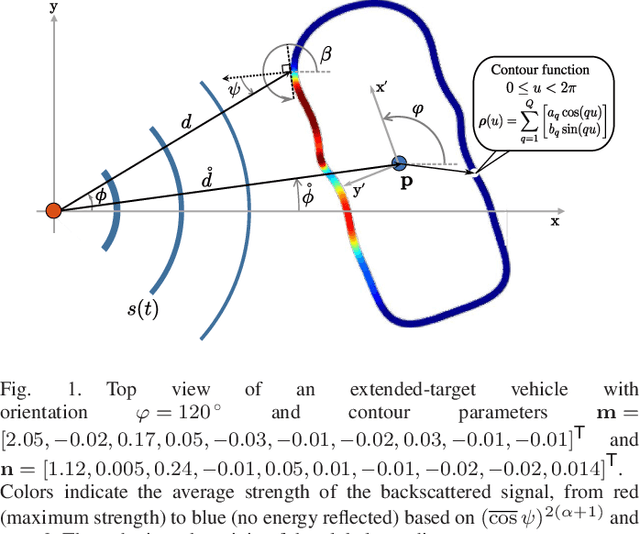
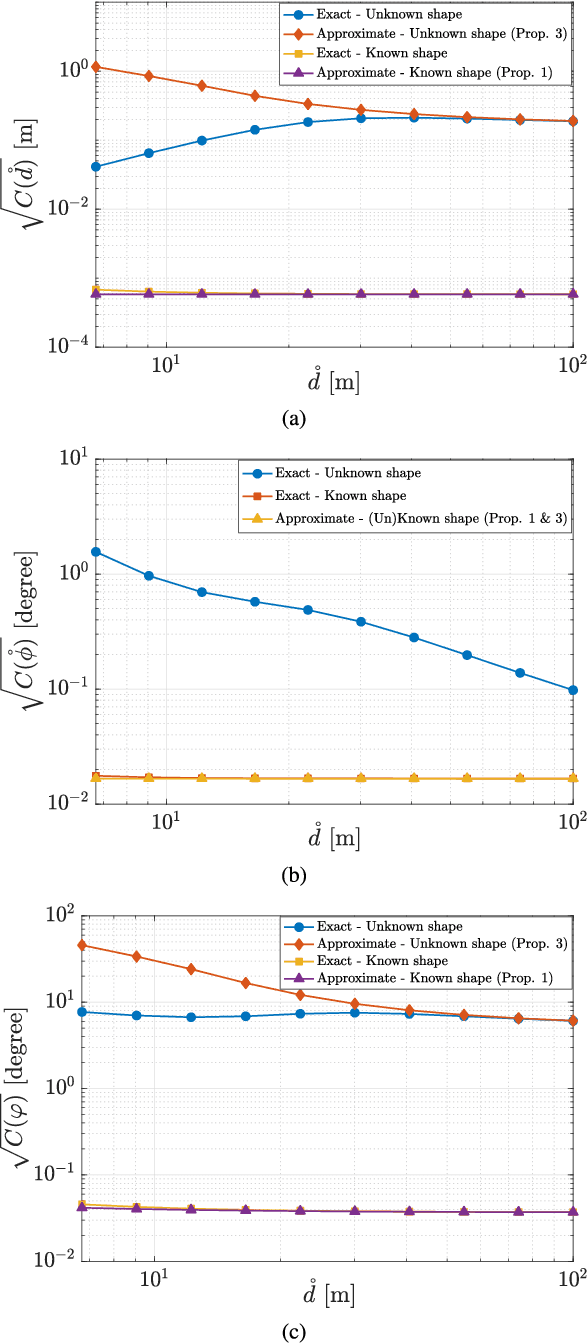
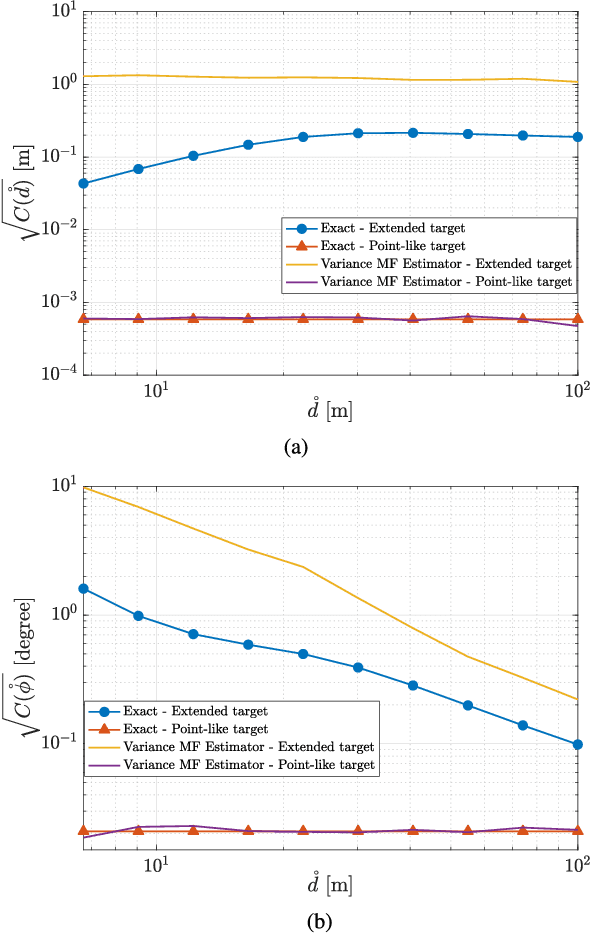
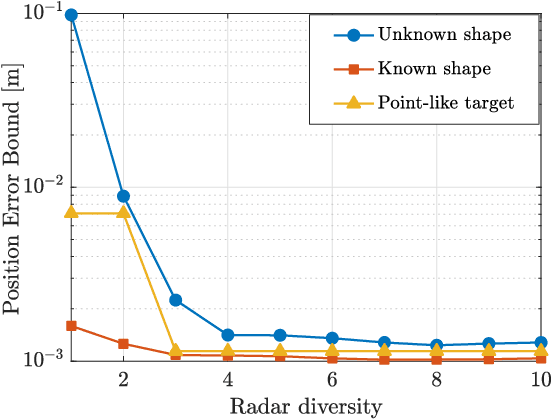
Abstract:Due to their shorter operating range and large bandwidth, automotive radars can resolve many reflections from their targets of interest, mainly vehicles. This calls for the use of extended-target models in place of simpler and more widely-adopted point-like target models. However, despite some preliminary work, the fundamental connection between the radar's accuracy as a function of the target vehicle state (range, orientation, shape) and radar properties remains largely unknown for extended targets. In this work, we first devise a mathematically tractable analytical model for a vehicle with arbitrary shape, modeled as an extended target parameterized by the center position, the orientation (heading) and the perimeter contour. We show that the derived expressions of the backscatter signal are tractable and correctly capture the effects of the extended-vehicle shape. Analytical derivations of the exact and approximate hybrid Cram\'er-Rao bounds for the position, orientation and contour are provided, which reveal connections with the case of point-like target and uncover the main dependencies with the received energy, bandwidth, and array size. The theoretical investigation is performed on the two different cases of known and unknown vehicle shape. Insightful simulation results are finally presented to validate the theoretical findings, including an analysis of the diversity effect of multiple radars sensing the extended target.
RIS-aided Joint Localization and Synchronization with a Single-Antenna Receiver: Beamforming Design and Low-Complexity Estimation
Apr 28, 2022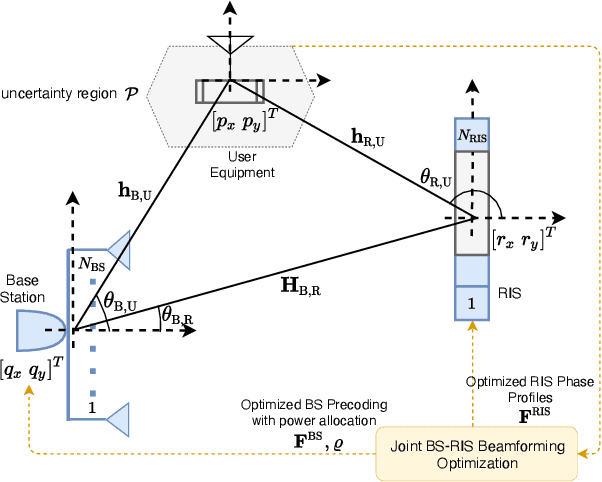
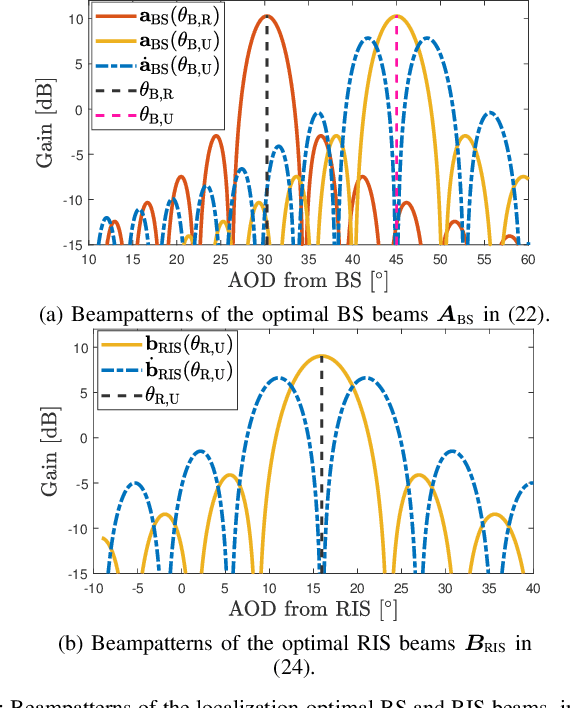
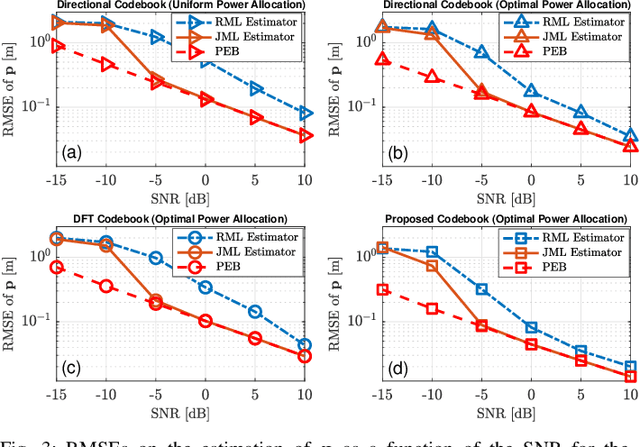
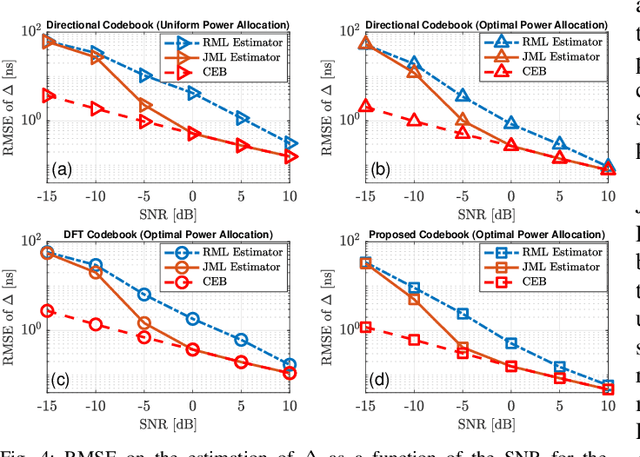
Abstract:Reconfigurable intelligent surfaces (RISs) have attracted enormous interest thanks to their ability to overcome line-of-sight blockages in mmWave systems, enabling in turn accurate localization with minimal infrastructure. Less investigated are however the benefits of exploiting RIS with suitably designed beamforming strategies for optimized localization and synchronization performance. In this paper, a novel low-complexity method for joint localization and synchronization based on an optimized design of the base station (BS) active precoding and RIS passive phase profiles is proposed, for the challenging case of a single-antenna receiver. The theoretical position error bound is first derived and used as metric to jointly optimize the BS-RIS beamforming, assuming a priori knowledge of the user position. By exploiting the low-dimensional structure of the solution, a novel codebook-based robust design strategy with optimized beam power allocation is then proposed, which provides low-complexity while taking into account the uncertainty on the user position. Finally, a reduced-complexity maximum-likelihood based estimation procedure is devised to jointly recover the user position and the synchronization offset. Extensive numerical analysis shows that the proposed joint BS-RIS beamforming scheme provides enhanced localization and synchronization performance compared to existing solutions, with the proposed estimator attaining the theoretical bounds even at low signal-to-noise-ratio and in the presence of additional uncontrollable multipath propagation.
Design of Customized Adaptive Radar Detectors in the CFAR Feature Plane
Mar 23, 2022
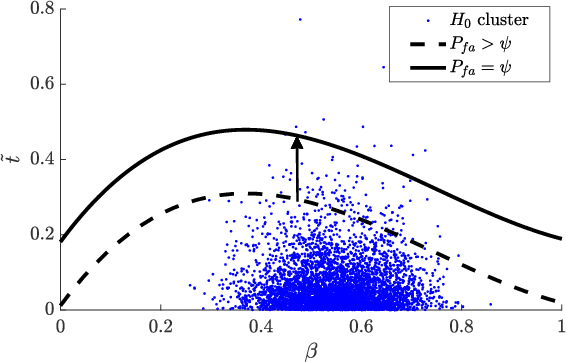


Abstract:The paper addresses the design of adaptive radar detectors having desired behavior, in Gaussian disturbance with unknown statistics. Specifically, given detection probability specifications for chosen signal-to-noise ratios and steering vector mismatch levels, a methodology for the optimal design of customized CFAR detectors is devised in a suitable feature plane based on maximal invariant statistics. To overcome the analytical and numerical intractability of the resulting optimization problem, a novel general reduced-complexity algorithm is developed, which is shown to be effective in providing a close approximation of the desired detector. The proposed approach solves the open problem of ensuring a prefixed false alarm probability while controlling the behavior under both matched and mismatched conditions, so enabling the design of fully customized adaptive CFAR detectors.
 Add to Chrome
Add to Chrome Add to Firefox
Add to Firefox Add to Edge
Add to Edge